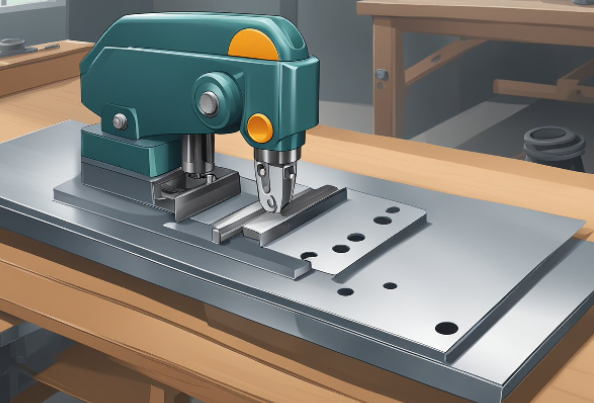Sheet metal hole punch is a versatile tool used to create holes in sheet metal. These tools come in a variety of sizes and shapes, making them suitable for a wide range of applications. From creating holes for electrical wiring to adding decorative elements to metal pieces, sheet metal hole punches are an essential tool for metalworkers.
One of the advantages of using a sheet metal hole punch is the precision it offers. With the ability to create holes of varying sizes and shapes, metalworkers can achieve the desired outcome with accuracy and efficiency. Additionally, sheet metal hole punches are relatively easy to use, even for beginners. With proper instruction and practice, anyone can learn to use a sheet metal hole punch effectively.
When selecting a sheet metal hole punch, it is important to consider the size and thickness of the metal being worked on, as well as the desired hole size and shape. Different punches may require different levels of force to operate, so it is important to choose a tool that is appropriate for the job at hand. With the right tool and technique, sheet metal hole punches can be used to create precise, professional-looking holes in sheet metal.
Types of Sheet Metal Hole Punches
There are several types of sheet metal hole punches available in the market. Each type has its own advantages and disadvantages, depending on the application and the user’s preferences. Here are the three main types of sheet metal hole punches:
Manual Punches
Manual punches are the most basic type of hole punches. They require the user to apply force manually to punch a hole in the sheet metal. They are typically handheld and easy to use, making them a popular choice for DIY enthusiasts and small-scale projects.
Manual punches come in various sizes and shapes, and can be used to punch holes in different types of materials, including aluminum, brass, copper, and steel. They are also affordable and can be purchased at most hardware stores.
Hydraulic Punches
Hydraulic punches use hydraulic pressure to punch holes in sheet metal. They are typically larger and more powerful than manual punches, and are suitable for punching holes in thicker and harder materials. Hydraulic punches can be operated manually or with a foot pedal, making them a versatile option for different types of applications.
Hydraulic punches come in various sizes and shapes, and can be used to punch holes in different types of materials, including stainless steel, mild steel, and aluminum. They are also more expensive than manual punches, and require a hydraulic pump or power source to operate.
CNC Punches
CNC (Computer Numerical Control) punches are the most advanced type of hole punches. They use computer-controlled machines to punch holes in sheet metal, making them highly accurate and efficient. CNC punches are typically used in large-scale manufacturing and industrial applications, where precision and speed are crucial.
CNC punches come in various sizes and shapes, and can be programmed to punch holes in different patterns and shapes. They are also more expensive than manual and hydraulic punches, and require specialized training and software to operate.
In conclusion, choosing the right type of sheet metal hole punch depends on the application, the material, and the user’s preferences. Manual punches are suitable for small-scale projects, hydraulic punches for medium-scale projects, and CNC punches for large-scale manufacturing and industrial applications.
Operating Procedures and Safety
Preparation and Setup
Before operating a sheet metal hole punch, it is important to ensure that all necessary safety precautions have been taken. This includes wearing appropriate personal protective equipment such as safety glasses and gloves.
The sheet metal must also be properly secured in place before beginning the punching process. This can be done using clamps or a vice to prevent the sheet metal from moving during the punching process.
Punching Process
To begin the punching process, the operator should align the punch with the desired location on the sheet metal and apply pressure to the punch handle. The punch will create a hole in the sheet metal, and the waste material will be collected in a container underneath.
It is important to ensure that the punch is properly aligned with the sheet metal to prevent damage to the punch or the sheet metal. The operator should also check the punch and die for any signs of wear or damage before beginning the punching process.
Safety Guidelines
When operating a sheet metal hole punch, it is important to follow all safety guidelines to prevent injury. The operator should never attempt to punch holes in materials that are too thick for the punch, as this can cause the punch to break or the sheet metal to become damaged.
The operator should also avoid placing their hands near the punch during the punching process, as this can result in injury. If the punch becomes jammed or stuck, the operator should immediately stop the machine and disconnect the power source before attempting to clear the jam. For more info visit Myflixer
By following proper operating procedures and safety guidelines, operators can safely and efficiently use a sheet metal hole punch to create precise holes in sheet metal.

